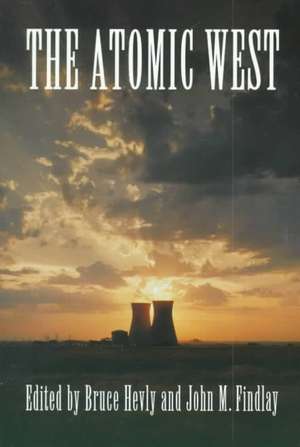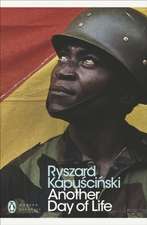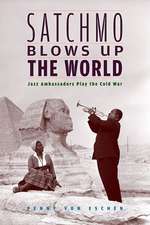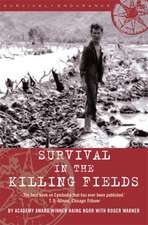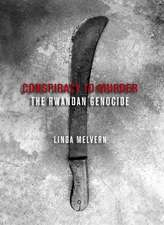The Atomic West: Emil and Kathleen Sick Book Series in Western History and Biography
Autor Bruce W. Hevly, John M. Findlayen Limba Engleză Paperback – 30 sep 1998
In the years that followed the war, the U.S. Atomic Energy Commission selected additional western sites for its work. Many westerners initially welcomed the atom. Like federal officials, they, too, regarded their region as "empty," or underdeveloped. Facilities to make, test, and base atomic weapons, sites to store nuclear waste, and even nuclear power plants were regarded as assets. By the 1960s and 1970s, however, regional attitudes began to change. At a variety of locales, ranging from Eskimo Alaska to Mormon Utah, westerners devoted themselves to resisting the atom and its effects on their environments and communities. Just as the atomic age had dawned in the American West, so its artificial sun began to set there.
The Atomic West brings together contributions from several disciplines to explore the impact on the West of the development of atomic power from wartime secrecy and initial postwar enthusiasm to public doubts and protest in the 1970s and 1980s. An impressive example of the benefits of interdisciplinary studies on complex topics, The Atomic West advances our understanding of both regional history and the history of science, and does so with human communities as a significant focal point. The book will be of special interest to students and experts on the American West, environmental history, and the history of science and technology.
Din seria Emil and Kathleen Sick Book Series in Western History and Biography
-
 Preț: 229.73 lei
Preț: 229.73 lei -
 Preț: 245.72 lei
Preț: 245.72 lei -
 Preț: 233.37 lei
Preț: 233.37 lei -
 Preț: 272.51 lei
Preț: 272.51 lei - 23%
 Preț: 649.19 lei
Preț: 649.19 lei - 23%
 Preț: 651.12 lei
Preț: 651.12 lei - 23%
 Preț: 648.14 lei
Preț: 648.14 lei - 23%
 Preț: 648.61 lei
Preț: 648.61 lei - 23%
 Preț: 651.12 lei
Preț: 651.12 lei - 23%
 Preț: 648.31 lei
Preț: 648.31 lei - 23%
 Preț: 646.67 lei
Preț: 646.67 lei - 23%
 Preț: 645.17 lei
Preț: 645.17 lei -
 Preț: 270.39 lei
Preț: 270.39 lei -
 Preț: 228.59 lei
Preț: 228.59 lei -
 Preț: 228.38 lei
Preț: 228.38 lei - 23%
 Preț: 651.25 lei
Preț: 651.25 lei -
 Preț: 224.94 lei
Preț: 224.94 lei -
 Preț: 223.60 lei
Preț: 223.60 lei
Preț: 227.62 lei
Nou
Puncte Express: 341
Preț estimativ în valută:
43.56€ • 45.31$ • 35.96£
43.56€ • 45.31$ • 35.96£
Carte tipărită la comandă
Livrare economică 15-29 aprilie
Preluare comenzi: 021 569.72.76
Specificații
ISBN-13: 9780295977164
ISBN-10: 0295977167
Pagini: 296
Dimensiuni: 152 x 228 x 20 mm
Greutate: 0.41 kg
Ediția:New.
Editura: MV – University of Washington Press
Seria Emil and Kathleen Sick Book Series in Western History and Biography
ISBN-10: 0295977167
Pagini: 296
Dimensiuni: 152 x 228 x 20 mm
Greutate: 0.41 kg
Ediția:New.
Editura: MV – University of Washington Press
Seria Emil and Kathleen Sick Book Series in Western History and Biography
Notă biografică
Textul de pe ultima copertă
THE MANHATTAN PROJECT -- the World War II race to produce an atomic bomb -- transformed the entire country in myriad ways, but it did not affect each region equally. Acting on an enduring perception of the American West as an "empty" place, the U.S. government located a disproportionate number of nuclear facilities -- particularly the ones most likely to spread pollution -- in western states. The Manhattan Project manufactured plutonium at Hanford, Washington; designed and assembled bombs at Los Alamos, New Mexico; and detonated the world's first atomic bomb at Alamagordo, New Mexico, on July 16, 1945. In the years that followed the war, the U.S. Atomic Energy Commission continued to select western sites for its work. The Atomic West brings together contributions from several disciplines to explore the impact on the West of the development of atomic power from wartime secrecy and initial post-war enthusiasm to public doubts and protest in the 1970s and 1980s. An impressive example of the benefits of inter-disciplinary studies on complex topics, The Atomic West advances our understanding of both regional history and the history of science, and does so with human communities as a significant focal point.
Descriere
The Manhattan Project transformed the entire country in myriad ways, but it did not affect each region in the same way. "Atomic West" tells the story of how the U.S. government, acting on an enduring perception of the American West as an "empty" place, located a disproportionate number of nuclear facilities in the western states--especially the ones most likely to spread pollution. Maps.
